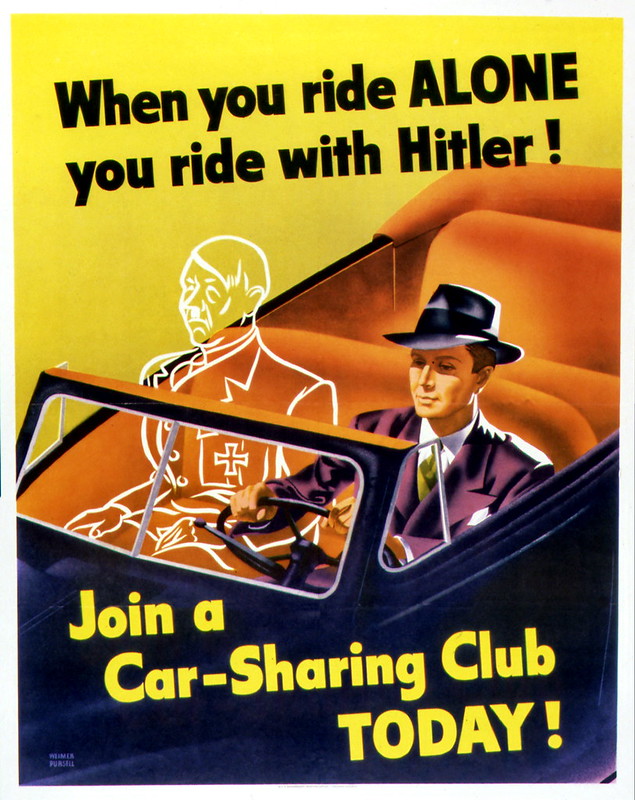Carpooling is not a new concept. It has been around for over a century but its popularity waxed and waned depending on society’s mentality, government initiatives and economic issues of the time. But how did ridesharing first start? What impact did the world wars have on it? And do people use it today?
Carpooling kick-started with the invention of the automobile at the start of the 20th century. At the end of 1914, the United States fell into a recession and those wealthy enough to already own a car capitalised on the struggling economy by offering rides in their car for a fee. This fee was known as a jitney (slang for a nickel) and within months the craze took over the states. Most of the time, jitneys were pre-arranged at a fixed stop and drivers would take passengers from point A to B, much like a bus or train. But in other cases, drivers would pick up passengers spontaneously on the side of the road and arrange the journey and fare when they hopped in.
Streetcar operators fought back and the press frequently ran stories about the safety of jitney rides with one article in the Journal of Law and Economics describing jitneys as the “Frankenstein of transportation.” Governments passed legislation that increased ride-givers liability costs and by 1918, carpooling had reduced by 90 percent.
The tide turned on these anti-carpooling policies during World War Two when soldiers were dumped far away from home while on furlough, giving them no option but to rideshare to get home to their families. The venerability of the soldier pioneer meant that over the following years, carpooling developed a great reputation and, for the first and only time in history, the American government even went so far as to release pro-carpooling propaganda during the Second World War with the tag line “When You Ride Alone You Ride with Hitler”.

However, by the end of the war, with the damaged psyche of society, the reputation of sharing rides as dangerous began to creep into common sentiment. By 1950 the practice was banned in 23 states.
A couple of decades later, another U-turn over ridesharing was made. In 1974, an Oil Embargo, which limits the transport of petrol between countries, hit the United States. In attempt to rectify the shortage, Richard Nixon signed the Emergency Highway Energy Conservation Act which created funding for carpooling and discouraged people to drive alone.
President Carter followed Nixon’s lead and instigated multiple initiatives such as appointing the National Task Force on Ridesharing “to expand ridesharing programs through direct encouragement and assistance and create a continuing dialogue among all parties involved in managing ridesharing programs and/or incentive programs.” The energy crises of the 70’s worked wonders for ridesharing and it was the first time people recognized it improved air quality and mitigated petrol waste. By 1980, the Census Bureau estimated 23.5 percent of all Americans were carpooling.
Carpooling’s popularity rose, declined and rose again over the following decades. In recent years the rise in oil prices, increase in cost of living and climate change concerns have given impetus to switch to carpooling. But perhaps the most important factor in ridesharing’s appeal is smartphones and apps which make it far more practical than before. A mere click of a button means people no longer have to use the traditional (and laborious) methods of looking at notice boards or relying on word of mouth to carpool. Thousands of apps provide real-time rideshare options, whether you need one for your commute in the Silicon Valley or to take a road trip to Alaska. The flexibility of carpooling is another huge bonus because people don’t have to live near public transit to access it. Dani Simons, head of public sector partnerships at Waze, believes “the growing mismatch between where people live and where their jobs are” could be rectified by carpooling.
As history shows, the desire to travel freely and easily has always been a goal for most Americans. But perhaps modern-day technology is the clincher carpooling needed to make it accessible and affordable for all.




Pingback: 9 Ways to Reduce Your Carbon Footprints – Float Blog